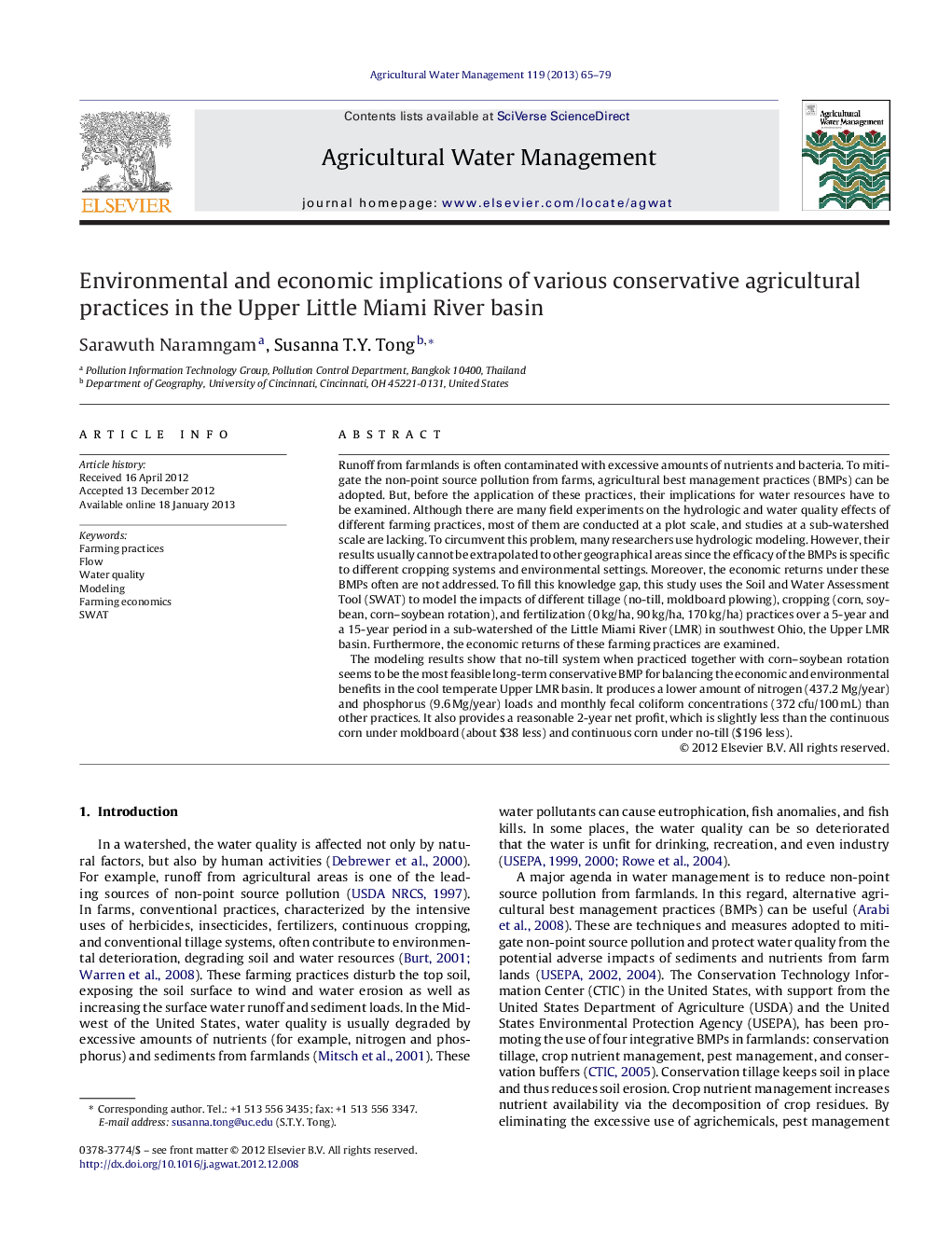| کد مقاله | کد نشریه | سال انتشار | مقاله انگلیسی | نسخه تمام متن |
|---|---|---|---|---|
| 4478927 | 1622960 | 2013 | 15 صفحه PDF | دانلود رایگان |

Runoff from farmlands is often contaminated with excessive amounts of nutrients and bacteria. To mitigate the non-point source pollution from farms, agricultural best management practices (BMPs) can be adopted. But, before the application of these practices, their implications for water resources have to be examined. Although there are many field experiments on the hydrologic and water quality effects of different farming practices, most of them are conducted at a plot scale, and studies at a sub-watershed scale are lacking. To circumvent this problem, many researchers use hydrologic modeling. However, their results usually cannot be extrapolated to other geographical areas since the efficacy of the BMPs is specific to different cropping systems and environmental settings. Moreover, the economic returns under these BMPs often are not addressed. To fill this knowledge gap, this study uses the Soil and Water Assessment Tool (SWAT) to model the impacts of different tillage (no-till, moldboard plowing), cropping (corn, soybean, corn–soybean rotation), and fertilization (0 kg/ha, 90 kg/ha, 170 kg/ha) practices over a 5-year and a 15-year period in a sub-watershed of the Little Miami River (LMR) in southwest Ohio, the Upper LMR basin. Furthermore, the economic returns of these farming practices are examined.The modeling results show that no-till system when practiced together with corn–soybean rotation seems to be the most feasible long-term conservative BMP for balancing the economic and environmental benefits in the cool temperate Upper LMR basin. It produces a lower amount of nitrogen (437.2 Mg/year) and phosphorus (9.6 Mg/year) loads and monthly fecal coliform concentrations (372 cfu/100 mL) than other practices. It also provides a reasonable 2-year net profit, which is slightly less than the continuous corn under moldboard (about $38 less) and continuous corn under no-till ($196 less).
► SWAT is used to model the hydrologic and water quality impacts of agricultural BMPs.
► The economic feasibilities of these BMPs are also examined.
► Results show that BMPs can reduce the environmental impacts of farm runoff.
► Of all the BMPs studied, no-till with corn–soybean rotation is the best option.
► SWAT is capable of providing a reliable prediction of water quantity and quality.
Journal: Agricultural Water Management - Volume 119, March 2013, Pages 65–79